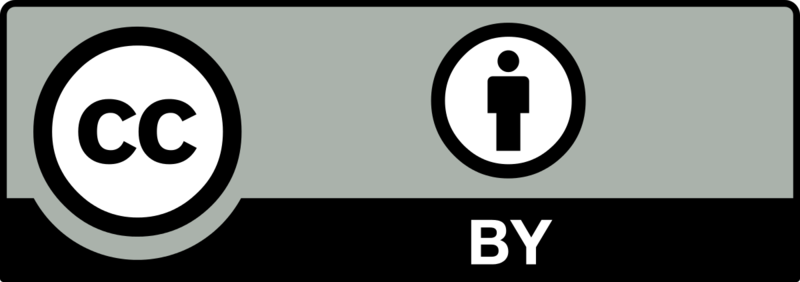MODELLING CONTEXT: A CASE OF DALANG TRAINING
DOI:
https://doi.org/10.26512/les.v11i2.10475Palavras-chave:
metafunction; classification; framing; zone of proximal development.Resumo
Este artigo discute o discurso pedagógico em formação Dalang (titereiro de teatro sombra). Princípios da Lingüística Sistêmico Funcional serão
utilizados como uma ferramenta para análise. O conceito de metafunções será empregado para ver as realizações de cada nível de abstração.
Modelagem, que é uma questão crítica no discurso pedagógico, será explorada para saber como um professor usa “abstração crítica” - a orientação semiótica para desenvolver uma habilidade. Classificação, enquadramento e noção de zona de desenvolvimento proximal também serão discutidos sobre a produção do discurso.
Downloads
Referências
Bernstein, B. (1971). Class, Code and Control: Theoritical Studies towards a Sociology of Language (Vol. 1). London: Routledge.
Bernstein, B. (1975). Class, Codes, and Control (Vol. 3). London: Routledge and Kegan Paul.
Bernstein, B. (1990). Classs, Codes and the Control: The Structuring of Pedagogic Discourse (Vol. 4). London: Routledge
Bernstein, B. (2000). Pedagogy, Symbolic Control, and Identity. Boston: Rowman and Littlefield Publishers, Inc.
Butt, D. G. (2000). Critical Abstractions and Rhetoric: the Latent Orger of Pedagogic Discourse. Mimeo: Dept of Linguistics, Macquarie University.
Butt, D.G. (2001). Firth, Halliday and the development of systemic functional
theory. In S. Auroux & E.F.K Koerner (Eds), History of language Sciences: An International Handbook on the Evolution of the Study of Language from the Beginning to Present (Vol.2, pp. 1806-1838). Berlin & New York: Walter de Gruyter.
Butt, D.G. (2003). On establishing the similarities and differences between context. Mimeo: Dept of Linguistics, Macquarie University
Butt, D.G (2004) Parameters of Context: On Establshing the similarities and differences between social processes. Mimeo: Dept. of Linguistics, Macquarie University.
Caffarel, A., Martin,J.R & Mattiessen, C.M.I.M. (Eds). (2004). Language Typology: A functional perspective. Amsterdam: John Benjamins Publishing Company.
Cloran, C. (1999). Context for Learning. In F. Christie (Ed.), Pedagogy and the Shaping of Consciousness. London: Cassel.
Christie, F. (1999). The pedagogic device and the teaching of English. In F. Christie (Ed), Pedagogy and shaping of the consciousness. London: Cassell Eggins, S. (2004). An introduction to systemic functional linguistics. New
York: Continuum.
Eggins, S & Martin, J.R (1997). Genres and Registers of Discourse. In T.A van Dijk (Ed.), Discourse as Structure and Process. (Vol. 1,pp. 230-256). London, Thousand Oaks & New Delhi: Sage publications.
Groenendael, Victoria M.C. (1985). The Dalang behind the wayang. Dordreccht & Cinnaminson: Foris Publication.
Halliday, M. A. K. (1978). Language as Social Semiotic. London: Edward Arnold.
Halliday, R. H. a. M. A. K. (1985). Language, Context, and Text: Aspects of Language in Social-Semiotic Perspective. Melbourne: Deakin University.
Halliday, M.A.K & Martin, J.R. (1993). Writing Sciences: literacy and discursive power. Pittsburgh, PA: University of Pittsburgh Press.
Halliday, M.A.K & Mattiessen, C.M.I.M. (1999). Construing Experience through Meaning: A Language-Based Approach to Cognition. London: Continuum.
Halliday, M.A.K & Mattiessen, C.M.I.M. (2004). An Introduction to Functional Grammar (3rd ed.) London: Arnold.
Hasan, R. (1995). The conception of context in text. In P Fries. & M Gregory (Eds), Discourse in society: systemic functional perspective. Oxford: Oxford University Press.
Hasan, R. (1999). Speaking with Reference to Context. In M. Ghadessy (Ed.), Tex and Context in Functional Linguistics (Vol. 169). Amsterdam: John Benjamins Publishing Company.
Hasan, R. (2005) Basil Benstein: an exceptional 1924-2000. In J.J Webster (Ed.), Language Society and Consciousness. London: Equinox.
Martin, J.R. (1992). English text: system and structure. Amsterdam & Philadelphia: John Benjamins.
Martin, J. R. (1997). Analysing Genre: functional parameters. In F. Christie & J.R Martin (Eds.), Genre and Institutions: Social processes in the workplace and school (pp. 1-39). London & Washington: Cassell.
Martin, J. R. (1999). Mentoring Semogenesis: Genre-based Literacy. In C. Fraces (Ed.), Pedagogy and the Shaping of Consciousness. London: Cassel.
Martin, J.R & Rose, D. (2007). Working with Discourse: Meaning beyond the clause (2nd ed). London: Continuum.
Mattiessen, C.M.I.M. (1993). Register in the round: diversity in a unified theory of register analysis. In M. Ghadessy (Ed.), Register Analysis: Theory and Practice (pp.221-292). London & New York: Pinter Publishers.
Matthiessen, C.M.I.M. (2002). Combining clauses into clause complexes: a multi0faceted view. In J. Bybee & M. Noonan (Eds.), Complex sentences in grammar and discourse: essays in honor of Sandra A. Thomson (pp. 237-322).
Amsterdam: John Benjamins Publishing Company. Rothery, J. and Stenglin, M. (1994). Writing a Book Review: A Unit of Work for Junior Secondary English (Write It Right Resources for Literacy and Learning). Sydney: Metropolitan East Disadvantages Schools Programme.
Teich, E. (1999). Systemic Functional Grammar in Natural Language Generation: Description and computational representation. London: Cassell.
Tharp, R.G & Gallimore, R. (1988). Rousing minds to life. Cambridge: Cambridge University Press.
Van Ness, Edward C. (1980). Javanese wayang kulit: an introduction. Oxford: Oxford University Press
Veel, R. (1997). Learning how to mean ”“scientifically speaking: apprenticeship into scientific discourse in the secondary school. In F. Christie and J.R Martin,
Genres and Institutions: Social Processes in the Workplace and School. London: Cassel, 161-95.
Ventola, E. (1987). The Structure of Social Interaction. London: Frances Pinter.
Wertsch, J. (1985). Vygotsky and the Social Formation of Mind. Cambridge, MA: Harvard University Press.
Downloads
Publicado
Como Citar
Edição
Seção
Licença
Autores/as que publicam nesta revista concordam com os seguintes termos:
Autores/as mantêm os direitos autorais e concedem à revista o direito de primeira publicação, sendo o trabalho simultaneamente licenciado sob a Creative Commons Attribution 4.0 International license que permite o compartilhamento do trabalho com reconhecimento da autoria do trabalho e publicação inicial nesta revista.



